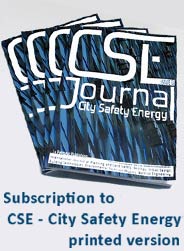Roman buildings: mortar, hydraulic mortar and pozzolanic concrete in the Gulf of Naples, Campania –Italy.
Abstract
The article is intended to synthesize published information regarding carried out into mortar and concrete materials about roman buildings in the gulf of Naples, Italy.
The region for its geological formation and for the historical significance of Roman cities and its monuments is interested by multidisciplinary studies on the raw materials and roman construction technologies for an in-depth knowledge of the composition of geomaterials degraded in time and Structural problems with a view to restoring the archaeological heritage.
The article presents the case studies of two geographic areas in particular, the sites of the Phlegrean Fields and the Vesuvian area (Puteoli, Baia, Misenum, Pompeii, Herculaneum, Stabia, Surrentum). The results indicated that complexes and monuments of importance have a composition of mortars and conglomerates which is found to match what is indicated by the sources and that malfunctions made in different chronological periods do not always retain the same composition.Forthermore results confirmed that Roman engineers extensively used local geomaterials such as volcanic and sedimentary aggregates mixed with hydrated lime.
Keywords
Read the full text
DOWNLOAD PDFReferences
Brandon C. J., Hohlfelder R. L., Jackson M. D., Oleson J. P. (eds.) 2014, Building For Eternity. The History And Technology Of Roman Concrete Engineering in the sea, Oxford & Philadelphia.
De Luca R., Miriello D., Pecci A., Domínguez Bella S., Bernal Casasola D.,
Cottica D., Crisci G. M. 2014, Mortar plaster from the Garum workshop at Pompei (Italy): an archeometric study, VIII Congresso Nazionale di Archeometria, Scienze e Beni Culturali: stato dell’arte e prospettive, Bologna 5 - 7 Febbraio.
De Vita A., Pesaresi P., Puglisi V. 2010, Overview of the 100 Mortars Project at the Archaeological Site of Herculaneum, J. Válek, C. Groot, J. J. Hughes (eds.), 2nd Historic Mortars Conference HMC2010 and RILEM TC 203-RHM Final Workshop 22-24 September 2010, Prague, Czech Republic.
Giuliani C. F. 2016, L’edilizia nell’antichità, Roma. SBN 9788843037094.
Grifa C., Barba S., Fiorillo F., Germinario C., Izzo F., Mercurio M., Musmeci D., Potrandolfo A., Santoriello A., Toro P., Langella A. 2016, The Domus Of Octavius Quartio In Pompeii: Damage Diagnosis Of The Masonries And Frescoed Surfaces, International Journal Of Conservation Science, Volume 7, Special Issue 2, 885-900.
Imperatore V., Proietti L. M. 2004, L’applicazione della diagnostica alle malte antiche del Rione Terra di Pozzuoli, Catalano L., Frunzio G. (eds.),La Diagnostica per la Tutela dei Materiali e del Costruito, 4 dicembre 2003, Sito reale di San Leucio (Ce), Napoli, 159-164.
Izzo F., Arizzi A., Cappelletti P., Cultrone G., De Bonis A., Germinario C., Graziano S. F., Grifa C., Guarino V., Mercurio M., Morra V., Langella A. 2016, The art of building in the Roman period (89 B.C. – 79 A.D.): Mortars, plasters and mosaic floors from ancient Stabiae (Naples, Italy), Construction and Building Materials 117, 129–143.
La Russa M. F., Ruffolo S. A., Ricca M., Rovella N., Comite V., Alvarez de Buergo M., Crisci G. M., Barca D. 2015, Archaeometric approach for the study of mortars from the underwater archaeological site of Baia (Naples) Italy: Preliminary results, Periodico di Mineralogia, 84, 3A (Special Issue), 553-567, DOI: 10.2451/2015PM0031.
Leone G., De Vita A., Magnania A., Rossi C. 2016, Characterization of archaeological mortars from Herculaneum, Thermochimica Acta 624, 86–94.
Lippiello M. 2011, Pozzolanic Cementum of The Ancient Constructions in ‘‘Campi Flegrei’’ Area, International Journal of Architectural Heritage, 5, 84–100.
Miriello D., Barca D., Bloise A., Ciarallo A., Crisci G. M., De Rose T., Gattuso C., Gazineo F., La Russa M. F. 2010, Characterisation of archaeological mortars from Pompeii (Campania, Italy) and identification of construction phases by compositional data analysis, Journal of Archaeological Science 37, 2207-2223.
Paternoster G., Proietti L. M., Vitale A. 2007, Malte e tecniche edilizie del Rione Terra di Pozzuoli. L’età romana. Pozzuoli, ISBN 88-743137489788874313747.
Pérez M. C., García-Diego F. J., Merello P., D’Antoni P., Fernández-NavajasA., Ribera i Lacomba A., Ferrazza L., Pérez-Miralles J., Baró J. L., Merce P., D’Antoni H., Curiel-Esparza J. 2013, Ariadne ́s house (Pompeii, Italy) wall paintings: A multidisciplinary study of its present state focused on a future restoration and preventive conservation, Materiales de Construcción Vol. 63, 311, 449-467.
Rispoli C., Graziano S. F., De Bonis A., Cappelletti P., Esposito R., Talamo P. 2015, The Piscina Mirabilis: caracterization of geomaterials, IMEKO International Conference on, Metrology for Archaeology and Cultural Heritage, Benevento, October 22-23, 266- 270.
Rispoli C., Graziano S.F., Guarino V. , De Bonis A., Esposito R., Budetta T., Morra V., Cappelletti P. 2016, Characterization of ancient mortars: preliminary results from Villa del Pezzolo, Sorrento Peninsula, Italy, IMEKO International Conference on, Metrology for Archaeology and Cultural Heritage, Torino, Italy, October 19-21, 151-156.
Stanislao C., Rispoli C., Vola G., Cappelletti P., Morra V., De’ Gennaro M. 2011, Contribution to the knowledge of ancient Roman seawater concretes: the Phlegrean pozzolan adopted in the construction of the harbour at Soli-Pompeiopolis (Mersin, Turkey), Periodico di Mineralogia, Special Issue Devoted to Prof. Franco Enrico, 80:3 (Special Issue), 471-488. [DOI:10.2451/2011PM0031]
DOI: http://dx.doi.org/10.12896/cse201700100104
Refbacks
- There are currently no refbacks.

This work is licensed under a Creative Commons Attribution 3.0 License.
CSE Journal - City Safety Energy is a semiannual journal (Two ISSUES per Year) published by Le Penseur in Brienza (PZ) - Italy | ISSN print edition 2283-8767 | ISSN online edition 2284-3418 - Journal registerd at the Court of Potenza (Italy) n. 219/2014


